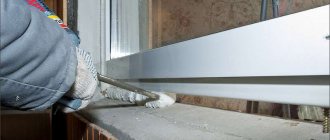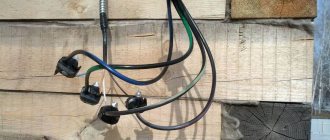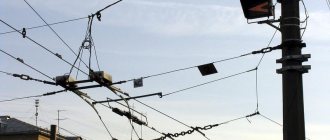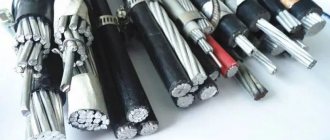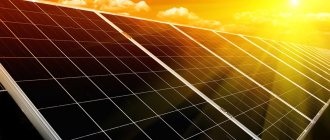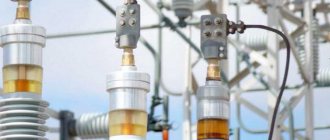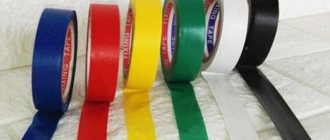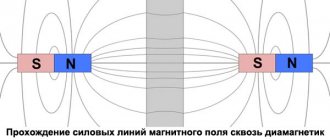Any electrical equipment, including generators, power plants and switchgear, consists of live parts. For reliable and safe operation, the latter must be protected from each other and from the influence of surrounding components. Electrical insulating materials are used for these purposes.
It is important that the winding on the armature is separated from its core, the excitation coil from a similar part, poles and frame of the unit. Materials that are used to insulate something from electrical current are called dielectrics. It is worth noting that such products come in two types - some do not pass current at all, others - although they do this, but in tiny quantities.
When creating such materials, organic and inorganic elements are used, along with various additives necessary for impregnation and gluing. Recently, liquid insulation for wires, often used in switches and transformers (for example, transformer oil), has been gaining widespread popularity. No less often, gaseous dielectrics, including ordinary air, are used in electrical equipment.
Electrical insulation
It is a layer of material that is not capable of conducting electricity, or, in other words, a dielectric. A metal conductor coated with such material is reliably protected from contact with another conductor, and is also not capable of causing damage to the person working with it.
The following dielectrics act as insulating materials: glass, ceramics, various types of polymers, mica. One type of insulation is air insulation. Its design is notable for the fact that the conductor cores are located in space in such a way that there is a layer of air between them, which limits their contact.
Historically, the first insulation samples were made from paraffin-impregnated paper or rubber wound around copper wires. Today, rubber is used for wires and cables operating under conditions of large temperature changes.
The service life of the insulation is highly dependent on the temperature of the working environment. An excess of a few degrees is enough to reduce the service life of the insulation material by approximately half.
Video description
The types and properties of stone wool are described in the video:
Unlike glass wool, stone wool does not cause irritation when cutting and laying. But of all fiber insulation, it has the highest price.
Slag
Another type of fibrous mineral insulation is slag wool. In terms of its heat-saving characteristics, it is close to stone and glass wool, but its scope of application is limited to non-residential buildings. The fact is that these heat-insulating materials are highly chemically active and, in close contact with metal structures, oxidize them. They may also contain toxic substances, since slag wool is produced from waste from metallurgical production - blast furnace slag.
Stitched slag mat Source isolantisrl.it
The fibers of the material are brittle and mobile, which forces the constant use of personal protective equipment for the eyes, skin, and respiratory organs during transportation, loading and installation.
But in terms of price, it is one of the most affordable materials, so it is often used to insulate garages, warehouses and other utility buildings.
Characteristics of electrical insulators
All electrical insulators without exception are subject to general requirements.
Electric strength
Methods of fire protection of electrical communications
The main task of the dielectric is to provide the required level of the electrical breakdown strength value. This value is directly dependent on how thick the porcelain wall of the insulator is. Strength failure occurs when a solid dielectric breaks down or as a result of a discharge along the surface of an insulator. Strength is characterized by the industrial frequency voltage that the insulator can withstand on a dry and wet surface, as well as by the pulse voltage during testing. This value is checked with a special device - a megohmmeter.
Resistivity
The insulating material allows a small portion of the electrical current to pass through. This value is disproportionately small in comparison with the currents that constantly flow through the veins. Electric current can flow through two paths: through the insulating material itself or along its surface. Specific resistance is the value of resistance per unit volume of a material. It is equal to the ratio of the products of the resistance values of the current flowing through the insulator and through it to their sum.
As a unit of measurement for this quantity, we took the resistance value of an insulating material made in the shape of a cube with a side of 1 cm, where the direction of the current coincides with the direction vector of the two outer opposite faces. The value of resistivity depends on the state of aggregation of the material and other important quantities.
The dielectric constant
After placing the insulator in an electromagnetic field, the direction in space of particles with positive charges changes: they line up along the lines of force of the electromagnetic field. The electron shells change their orientation in the opposite direction. The molecules become polarized. When dielectrics are polarized, molecules form their own field, which acts in the direction opposite to the direction of the general field. This ability is determined by the dielectric constant.
Important! Dielectric constant characterizes the degree of polarization of the dielectric. It affects the capacitance of elements such as capacitors. In their manufacture, insulation with a high dielectric constant should be used. The value is measured in farads per linear meter (F/m). The unit of measurement got its name in honor of the great English scientist Michael Faraday, who made a significant contribution to science in the field of electromagnetism.
Dielectric loss angle
Dielectric loss is the electric field energy dissipated in an insulating material over a certain unit of time. Energy does not disappear anywhere, but moves from one state to another (heat). The higher the loss, the greater the risk of thermal destruction of the dielectric. This characteristic of an electrically insulating material is measured by the dielectric loss tangent. The dependence of the tangent of the angle on the value of dielectric losses is linear.
Properties of current insulators
The main task of a dielectric is to provide an insulating function.
Therefore, as basic operational properties, we can note an increased resistivity, a small dielectric loss tangent and a high breakdown voltage - the already mentioned breakdown. Resistance determines how much a material can prevent the conduction of current under different parameters of the contacting electrical circuit. Dielectric losses, in turn, indicate the influence of the insulator on the performance of the active conductor - normatively this value should tend to zero, but most often high resistance just leads to increasing losses in the main circuit. The breakdown properties of electrical insulating materials, which are determined by voltage, are also important.
In this case, we can talk about the direct permeability of the target material. Moreover, all of the listed properties are recorded only if the stability of their “operation” over time and at a given temperature has been noted. Sometimes the electric field frequency is also indicated as a stability parameter during testing.
Areas of application of electrical insulators
High-voltage wires - device and application
To find out where electrical insulators are used, just remember where electrical wiring is common. These can be both domestic power supply and electric lighting systems, and industrial ones. Electrical power cables laid outdoors and underground contain several layers of such insulation. In instrument making, individual design elements of devices also have to be isolated from voltage. These can be either small elements of different boards or entire units. Such insulation allows you to maintain the performance characteristics of materials located near current-carrying conductors.
Corona discharge.
Also on topic:
ELECTRIC ENERGY
One of the most famous and widespread insulators is air at atmospheric pressure and normal temperature. For low voltages, the electrical resistivity of such air is approx. 1018 OhmHsm. When the electric field strength across a uniform air gap reaches 30 kV/cm, the conductivity increases as photoionization of the air begins and eventually a spark jumps between the electrodes. If the electrode geometry is heterogeneous, as in the case of a tip and a plane or a power line wire above the surface of the earth, a glowing region of ionized air called a corona discharge appears around the tip or wire when the electric field strength is high enough. The corona current increases with increasing voltage and eventually a spark or arc occurs depending on the power of the source and the resistance of the external circuit.
Liquid dielectrics
Liquid insulation
Which fire extinguisher should not extinguish live electrical wiring?
This type of dielectric includes various types of oils, varnishes, pastes and resins. Petroleum products – mineral oils – are widely used. Such insulators are used in low-power transformer substations, oil switches, cables and capacitors. Liquid insulation for wires is used in preparing cables and capacitors for operation.
The note. As an alternative to liquid insulation, you can use wire spray. Distilled water is also a dielectric.
The technical characteristics of liquid dielectrics directly depend on their purity. The more contaminated oil, water and other similar dielectric fluids are, the worse their performance is. The purification of such liquids is carried out using distillation or ion exchange sorption.
Solid dielectrics
Solid insulation
This is the most common and popular group of electrical insulating materials. Such insulators include:
- Glasses made from inorganic substances.
- Installation and capacitor ceramics.
- Muscovite, phlogopite.
- Asbestos.
- Films made of inorganic materials.
In addition, solid insulators are divided into polar, non-polar and ferroelectric. The criterion for separation is the degree of polarization. The main properties of solid insulators also include their chemical resistance, tracking resistance and dendrite resistance. The first quality characterizes the material’s ability to withstand aggressive chemical environments, such as acids and alkalis. Tracking resistance is the ability to withstand the effects of an electric arc. Dendritic resistance characterizes resistance to the appearance of dendrites. Dendrite is a product of the sediment of particles in an electrolyte, obtained when exposed to high-density electric current.
In addition to all this, the wires also protect against electromagnetic interference. As such protection, foil, spiral winding, and core braiding are used.
Soundproofing
Soundproofing and soundproofing protect the room from noise penetrating into a residential building from the outside. They are necessary both during the construction of a private house and during independent major renovations of an apartment. Modern films are divided into:
- Acoustic;
- Sound-padding.
The key difference between them is their purpose. Acoustic ones help improve audibility inside a particular room, and cushioning ones eliminate the problem of street noise from cars, etc. Such properties are ensured by a certain texture and design of the slabs. They can be presented in the form of mineral wool or foam plastic, where, on the one hand, there is a soft structure, and on the other, a hard reflective sheet (for example, aluminum or asbestos-cement). Polymer films that have a membrane structure are also now being produced. They are known for their combined properties due to a soft inner layer and a porous outer layer, which absorb sound from the room and reflect frequencies from the street.
Gaseous dielectrics
These types of insulation can be divided into two large groups: materials of natural origin and artificial. Ordinary air inhaled by humans is a natural insulating material; various gases are classified as artificial. Air is not suitable for use in hermetically sealed equipment enclosures due to the high percentage of oxygen it contains. Electrical gas will be relevant for such installations. Gaseous electrical insulating materials have a dielectric constant value of 1. The advantages of this group of dielectrics are the small amount of dielectric losses and the degree of breakdown.
Vacuum as an insulator
A gas environment at extremely low pressure can create conditions when the gas simply cannot generate a noticeable current in the interelectrode gap. Such conditions are called insulating vacuum. When colliding with electrons or positive ions that escape from the electrodes, ionization of the low-pressure gas molecules occurs very rarely.
The so-called high vacuum, under the condition of a constant voltage of up to 20 kV on the cathode surface, can do without breakdown at a field strength of the order of 5 MV/cm. If we are talking about the anode, then the voltage should be many times higher. And yet, a noticeable increase in voltage causes vacuum electrical insulating materials to lose their protective potential.
Breakdown in this case can occur as a result of the exchange of charged particles in the cathode-anode connection. Dielectrics of this type are more often used in electronics. They are used both to accelerate electrons in conventional instruments and in X-ray machines to support high-voltage applications.
Inorganic dielectrics
This type of insulation mainly includes substances whose chemical formula does not contain organic elements. The most common electrical insulating materials of this kind include the following series: glass and its varieties, mica, ceramic materials such as steatite, radio porcelain, thermocond. Glass derivatives are used to make various glass tubes and cylinders. Porcelain insulation is often used to create capacitors and resistors.
We classify thermal insulation materials
Thermal insulation materials and products can be systematized according to the main characteristics:
- By type of feedstock : inorganic (mineral and glass wool, cellular concrete, asbestos-based materials, ceramic, etc.) and organic (fibre boards, foam and foam plastics, peat slabs, etc.). Combined materials are also produced using organic and inorganic components.
By structure : fibrous (mineral, glass wool, wool, etc.), cellular (cellular concrete and polymers, foam and gas ceramics, etc.) and granular or loose (ceramic and slag gravel, pumice and slag sand, etc.
By shape : loose (cotton wool, perlite, etc.), flat (plates, mats, felt, etc.), shaped (cylinders, half-cylinders, segments, etc.), corded (cords made of inorganic fibers: asbestos, mineral and glass fibers ).
According to flammability (combustibility) : fireproof (expanded clay, cellular concrete, etc.), difficult to burn (cement-bonded particles, xylolite) and combustible (cellular plastics, peat slabs, reeds, etc.)
- According to the content of the binder : containing a binder (cellular concrete, fiberboard, etc.) and not containing a binder (glass wool, mineral fiber).
Classification by heat resistance
Below in the article, data on heat resistance classes of dielectrics are given, taken from GOST 8865-93 “Electrical insulation systems”, clause 2 2.1, table No. 1:
- Y – materials made from paper, cardboard, cellulose, silk, and various fibrous materials not immersed in a liquid dielectric. The temperature that the insulation can withstand is 90°C.
- A - includes materials of the previous class, as well as artificial silk, which are impregnated with oil and other varnishes. The temperature that the insulation can withstand is 105°C.
- E – these are synthetic and organic films, resins, compounds. The temperature that the insulation can withstand is 120°C.
- B – the insulator is based on mica, asbestos, fiberglass, which were made using organic binders of normal heat resistance. The temperature that such material can withstand is 130°C.
- F – the insulator is based on mica, asbestos, fiberglass, which are impregnated with resins and varnishes of appropriate heat resistance. The insulator can withstand heating up to 155°C.
- H – the insulator is based on mica, asbestos, fiberglass, which are used with organosilicon binders and impregnations. The fabric is characterized by high temperature resistance - up to 180°C.
- C – the insulator is based on mica, asbestos, fiberglass, which are used without any binders of organic origin. The most temperature resistant among insulating materials – up to 180°C.
Sleeve electrical insulation
This is a material from the group of mechanical protective devices that provides external physical protection. Typically, flexible sleeves are used to protect the conductors of power units, transformers and cables.
Traditional insulating tape works on the same principle, the task of which is to create a physical barrier. The sleeves also act as a layer that does not interact in any way with the tocan source at the electrochemical level. However, among the disadvantages of this material is rapid wear.
Electrical insulating varnished fabrics
Varnished insulating fabrics
This type of dielectric is characterized by the fact that it is made on the basis of fabric impregnated with varnish. The insulator is applied to the fabric using a brush. This varnish forms a film with the required dielectric properties.
The fabric used in such insulation is predominantly cotton. There are also materials based on silk, nylon and glass. Fiberglass fabric is characterized by increased resistance to high temperatures. The main area of application for such fabrics will be electrical machines and devices, where the flexibility of the insulating material is important.
The note. The most commonly used insulator of this type by electricians is ordinary PVC tape or, simply put, electrical tape.
This article briefly reviewed the types of insulation, properties and conditions of use of this material. The article will be useful to both experienced electrical engineers and home craftsmen trying their hand for the first time. It will help you select the required insulation of conductors and cables, according to the specific conditions of the work process.
Principles of using thermal insulation
The placement of insulation must be designed so that during the operation of the building it does not lose its insulating properties. The design documentation contains descriptions of the installation and protection of thermal insulation materials.
To avoid moisture condensation in a multilayer structure, it is necessary to install a vapor barrier made of a diffuse membrane near the wall. The joints of the vapor barrier sheet must be sealed with foil tape. Insulation materials subject to increased wind loads require the installation of a special dense protective layer.
Due to rising humidity levels inside a multilayer structure, the quality of thermal insulation decreases and mold and rot occur. Waterproofing and the use of vapor-permeable membranes will help reduce the negative impact of dampness.
